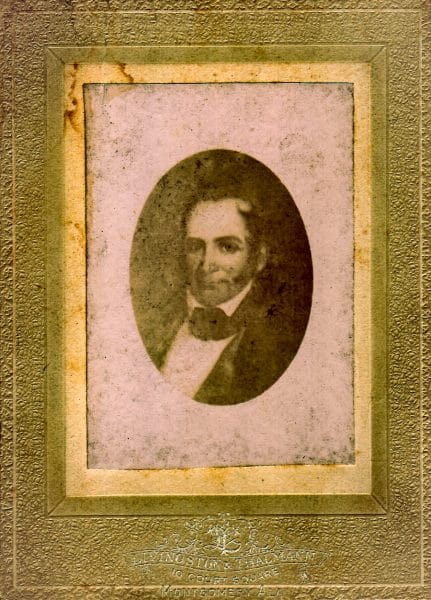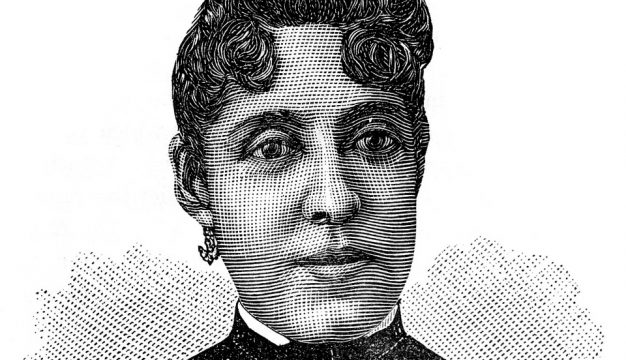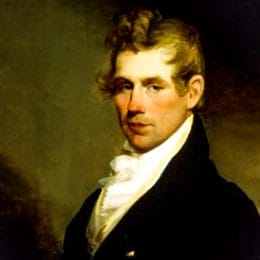Abner Smith Lipscomb
Abner Smith Lipscomb (1789-1856 or 1857) served in Alabama's Territorial Legislature, as a circuit court judge, and later as chief justice of the Alabama Supreme Court from 1823 to 1835. In 1839, he moved to Texas and served as an associate justice of the Texas Supreme Court from 1846 until his death and made other important contributions to Texas history.
Lipscomb was born on February 10, 1789, to Revolutionary War veteran Joel Lipscomb and Elizabeth Childs Lipscomb, both of Virginia, in the Abbeville District of South Carolina. He had five siblings. While living in Abbeville, Lipscomb developed a close relationship with local attorney John C. Calhoun, who would later gain renown as a politician and statesman in many roles and as a supporter of states' rights and slavery. (Calhoun County was named in his honor.) Under Calhoun, who was likely in the South Carolina legislature at the time, Lipscomb studied law, and was admitted to the bar in 1811. Afterwards, Lipscomb moved to the town of St. Stephens (in present-day Washington County) in the Mississippi Territory, where he established a successful law office. Several notable Alabamians, including future governor John Gayle and future congressman Francis Strother Lyon, studied law while working for Lipscomb in his St. Stephen's office. During the Creek War of 1813-14, Lipscomb raised and led a company of volunteers in the fight against the Creeks. In 1813, he married Elizabeth Gaines, who is described as the daughter of a planter. She was a distant relative of Lyon as well as brothers Edmund Pendleton Gaines and George Strother Gaines, who were important figures in Alabama's early history. The couple likely had four or more children.
Lipscomb was elected to the Alabama Territorial Legislature in 1818. After Alabama became a state in 1819, Lipscomb was appointed as a circuit judge, which automatically placed him as a justice of the Alabama Supreme Court as established by the 1819 Constitution. Initially, the court was composed of Lipscomb, chief justice Clement Comer Clay, Henry Webb, Richard Ellis, and Reuban Saffold. During the economic Panic of 1819, as Alabama looked for ways to cut costs for its newly elected government, the circuit judges executed their judicial duties within their respective jurisdictions, rather than traveling to the capital at Cahaba for individual hearings.
When Clement Comer Clay resigned as chief justice in 1823, Lipscomb was appointed as Clay's successor and largely worked out of his St. Stephen's office after his appointment as a Supreme Court justice. Lipscomb held his appointment until resigning in 1835. His opinions as chief justice are collected in the first ten volumes of the Alabama Reports. As chief justice, Lipscomb is credited with simplifying common law pleas and improving judicial administration in the state. After his resignation, Lipscomb practiced law in Mobile, Mobile County, which he briefly represented in the state legislature, and was elected as the chairman of the Judiciary Committee in 1838.
In 1839, Lipscomb moved to Texas, where he established a successful law office in Washington County. His wife Elizabeth and a daughter died within days of each other in 1841. He married Mary P. Bullock in 1843, and they would have several children as well. Among his notable achievements in Texas was his appointment as Secretary of the State of the Republic and participation in the 1845 state convention that accepted the joint resolution from the U.S. Congress annexing Texas. The convention also created the state constitution that year. When Texas adopted its state constitution in 1846, Lipscomb was appointed to the Texas Supreme Court and was reelected in 1851 and 1856. He served as an associate justice for 11 years and died in Austin, Texas. Sources differ on the exact date of his death, but confirm that he died less than a year after his second reelection to the Texas Supreme Court. The city of Lipscomb and Lipscomb County in Texas are named in his honor.








